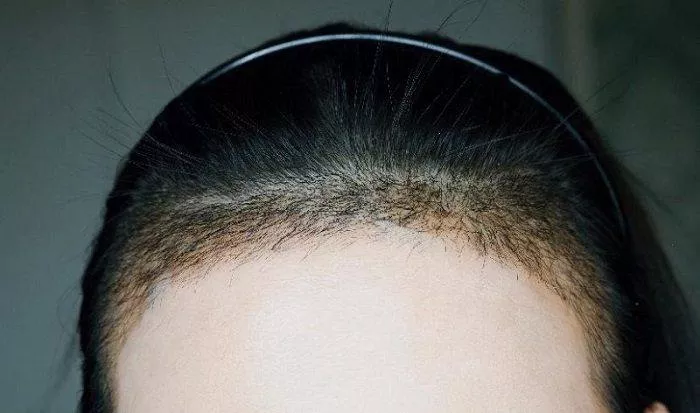Hair transplantation has become a highly sought-after solution for individuals experiencing hair loss, whether due to genetics, medical conditions, or lifestyle factors. One of the most common questions among patients is: “When does hair transplant start growing?” Understanding the growth timeline is crucial for setting realistic expectations and ensuring proper post-operative care.This article delves into the various stages of hair transplant growth, factors influencing the process, and expert tips to optimize results. By the end, you will have a clear understanding of what to expect after your procedure.
The Immediate Post-Transplant Phase (Days 0–10)
Following a hair transplant, the scalp undergoes an initial healing phase. During this period, the transplanted grafts stabilize, and the body begins recovery.
Key Observations in This Phase
Scab Formation: Small scabs form around the transplanted follicles, which typically fall off within 7–10 days.
Redness & Swelling: Mild inflammation is common but subsides within a week.
No Active Growth: The hair shafts (existing strands) may shed, which is normal and part of the process.
Expert Tip: Avoid scratching or picking at scabs to prevent graft dislodgement.
The Shedding Phase (Weeks 2–8)
Many patients experience shock loss, where transplanted hairs fall out. This is a natural part of the cycle and not a cause for concern.
Why Does Shedding Occur?
- The hair follicles enter a resting phase (telogen) before regenerating.
- The old hair shafts detach, making way for new growth.
What to Expect:No visible growth yet, but follicles remain alive beneath the skin.
The Early Growth Stage (Months 1–3)
New hair begins to emerge, though it may be fine and sparse initially.
Characteristics of Early Growth
- Thin, wispy strands appear.
- Growth is uneven, with some follicles activating faster than others.
- The hair may appear lighter or less dense than expected.
Expert Insight: Patience is key, as follicles take time to mature. Proper nutrition and scalp care can enhance growth.
The Active Growth Phase (Months 4–6)
This is when significant progress becomes visible.
Developments During This Period
- Hair thickens and darkens.
- Coverage improves, reducing visible scalp areas.
- Follicles become more synchronized in growth.
Pro Tip: Gentle scalp massages can stimulate blood flow, promoting faster growth.
The Maturation Stage (Months 7–12)
By this phase, most patients observe near-final results.
Key Features
- Hair reaches natural density.
- Texture and curl pattern stabilize.
- Fullness continues to improve up to 12 months.
Did You Know:Some patients experience continued thickening beyond the first year.
Factors Influencing Hair Transplant Growth
Several variables determine how quickly and effectively transplanted hair grows.
Critical Factors Include
Surgeon Skill: Precision in graft extraction and placement affects survival rates.
Post-Op Care: Following aftercare instructions prevents complications.
Health & Nutrition: Protein, vitamins (especially Biotin), and hydration support follicle health.
Age & Genetics: Younger patients often see faster results due to better healing.
Lifestyle Habits: Smoking and excessive alcohol can delay recovery.
Long-Term Maintenance and Sustaining Results (Beyond 12 Months)
While most patients achieve their desired hair density by the 12-month mark, maintaining the results requires ongoing care. Transplanted hair is typically permanent since it is sourced from DHT-resistant follicles (usually from the back of the scalp). However, existing non-transplanted hair may continue to thin over time due to genetic hair loss.
How to Preserve Transplanted and Natural Hair
Medications: Finasteride and minoxidil can help slow further hair loss.
Low-Level Laser Therapy (LLLT): Enhances blood circulation and follicle health.
Healthy Diet: Omega-3s, zinc, and iron support sustained hair growth.
Gentle Hair Care: Avoid harsh chemicals and excessive heat styling.
Expert Recommendation: Annual follow-ups with your hair specialist ensure early intervention if thinning recurs. Combining a hair transplant with preventive treatments maximizes longevity.
Psychological and Social Adjustments During the Growth Process
Undergoing a hair transplant is not just a physical transformation but also an emotional journey. Many patients experience anxiety during the shedding phase, fearing the procedure “failed.” However, understanding the natural growth cycle helps mitigate stress.
Coping Strategies
Realistic Expectations: Accept that progress is gradual.
Temporary Styling Solutions: Fiber concealers or hats can help during the awkward phases.
Support Groups: Connecting with others who have undergone the procedure provides reassurance.
Did You Know:Studies show that successful hair restoration significantly boosts self-esteem and social confidence.
Conclusion
Hair transplant growth follows a structured timeline, beginning with initial healing, shedding, and gradual regrowth before reaching full maturity around 12 months. While individual experiences vary, understanding these stages helps manage expectations and optimize outcomes.For best results, choose a qualified surgeon, adhere to post-operative guidelines, and maintain a healthy lifestyle. With patience and proper care, a fuller, natural-looking head of hair is well within reach.A hair transplant is not an overnight solution but a process that rewards patience with lasting, transformative results.By following this guide, prospective patients can confidently navigate their hair restoration journey with clarity and optimism.
Related Topics

